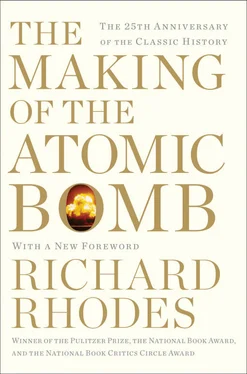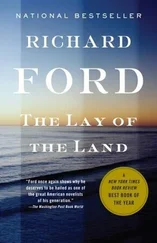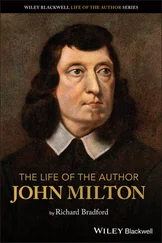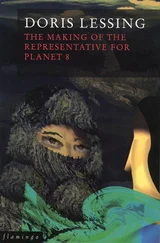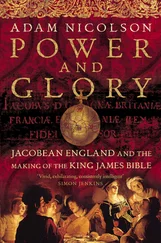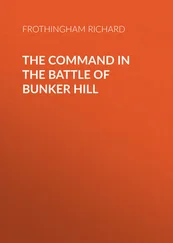The request perplexed a chemist in a nearby laboratory—“never having envisaged chemistry from that point of view,” says Joliot—but he contrived the necessary procedure. 746The Joliot-Curies irradiated a piece of aluminum foil, dropped it into a container of hydrochloric acid and covered the container. The acid dissolved the foil, producing, by reaction, gaseous hydrogen, which should carry the phosphorus with it out of solution. They drew off the gas into an inverted test tube. The dissolved aluminum fell silent then but the gas made the Geiger counter chatter: whatever was radioactive had been carried along. A different chemical test proved that the radioactive substance was phosphorus. Joliot bounded like a boy.
The discovery might serve as an offering to Irène’s ailing mother, who had prepared the daughter and sponsored the son-in-law:
Marie Curie saw our research work and I will never forget the expression of intense joy which came over her when Irene and I showed her the first artificially radioactive element in a little glass tube. I can still see her taking in her fingers (which were already burnt with radium) this little tube containing the radioactive compound—as yet one in which the activity was very weak. To verify what we had told her she held it near a Geiger-Müller counter and she could hear the rate meter giving off a great many “clicks.” This was doubtless the last great satisfaction of her life. 747
The Joliot-Curies reported their work—“one of the most important discoveries of the century,” Emilio Segrè says in his history of modern physics—in the Comptes Rendus on January 15, 1934, and in a letter to Nature dated four days later. 748“These experiments give the first chemical proof of artificial transmutation,” they concluded proudly. 749Rutherford wrote them within a fortnight: “I congratulate you both on a fine piece of work which I am sure will ultimately prove of much importance.” He had tried a number of such experiments himself, he said, “but without any success”—high praise from the master of experiment. 750
They had demonstrated that it was possible not only to chip pieces off the nucleus, as Rutherford had done, but also to force it artificially to release some of its energy in radioactive decay. Joliot foresaw the potential consequences of that attack in his half of the joint Nobel Prize address. Given the progress of science, he said, “we are entitled to think that scientists, building up or shattering elements at will, will be able to bring about transmutations of an explosive type…. If such transmutations do succeed in spreading in matter, the enormous liberation of useful energy can be imagined.” But he saw the possibility of cataclysm “if the contagion spreads to all the elements of our planet”: 751
Astronomers sometimes observe that a star of medium magnitude increases suddenly in size; a star invisible to the naked eye may become very brilliant and visible without any telescope—the appearance of a Nova. This sudden flaring up of the star is perhaps due to transmutations of an explosive character like those which our wandering imagination is perceiving now—a process that the investigators will no doubt attempt to realize while taking, we hope, the necessary precautions.
Leo Szilard received no invitation to the Solvay Conference. By October 1933 he had not accomplished any nuclear physics of note except within the well-equipped laboratory of his brain. In August he had written a friend that he was “spending much money at present for travelling about and earn of course nothing and cannot possibly go on with this for very long.” 752The idea of a nuclear chain reaction “became a sort of obsession” with him. When he heard of the Joliot-Curies’ discovery, in January, his obsession bloomed: “I suddenly saw that the tools were on hand to explore the possibility of such a chain reaction.” 753
He moved to a less expensive hotel, the Strand Palace, near Trafalgar Square, and settled in to think. He had “a little money saved up” after all, “enough perhaps to live for a year in the style in which I was accustomed to live, and therefore I was in no particular hurry to look for a job”—the excitement of new ideas thus relieving his August urgency. 754The bath was down the hall. “I remember that I went into my bath… around nine o’clock in the morning. There is no place as good to think as a bathtub. I would just soak there and think, and around twelve o’clock the maid would knock and say, ‘Are you all right, sir?’ Then I usually got out and made a few notes, dictated a few memoranda.” 755
One of the “memoranda” took the form of a patent application, filed March 12, 1934, relating to atomic energy. 756, 757It was the first of several, that year and the next, all finally merged into one complete specification, “Improvements in or Relating to the Transmutation of Chemical Elements.” (The same day Szilard applied for a patent, never issued, proposing the storage of books on microfilm. 758) Szilard had already realized—in September, in the context of inducing a chain reaction—that neutrons would be more efficient than alpha particles at bombarding nuclei. He applied that insight now to propose an alternative method for creating artificial radioactivity:
In accordance with the present invention radio-active bodies are generated by bombarding suitable elements with neutrons…. Such uncharged nuclei penetrate even substances containing the heavier elements without ionization losses and cause the formation of radio-active substances. 759
That was a first step. It was also a cheeky piece of bravado. Szilard had only theoretical grounds for believing that neutrons might induce radioactivity artificially. He had not done the necessary experiments. Only the Joliot-Curies had carried out such experiments so far, and they used alpha particles. Szilard was pursuing more than artificial radioactivity. He was pursuing chain reactions, power generation, atomic bombs. He had not yet found patentable form for these excursions. He wondered which element or elements might emit two or more neutrons for each neutron captured. He decided at some point, he said later, “that the reasonable thing to do would be to investigate systematically all the elements. There were ninety-two of them. But of course this is a rather boring task, so I thought that I would get some money, have some apparatus built, and then hire somebody who would just sit down and go through one element after the other.” 760
The task would hardly be boring. The truth is that Szilard lacked the resources for such work—access to a laboratory, a dedicated crew, sufficient financial support. “None of the physicists had any enthusiasm for this idea of a chain reaction,” he would remember. Rutherford threw him out. Blackett told him, “Look, you will have no luck with such fantastic ideas in England. 761Yes, perhaps in Russia. If a Russian physicist went to the government and [said], ‘We must make a chain reaction,’ they would give him all the money and facilities which he would need. But you won’t get it in England.” Soaking in his bath against the London chill, Szilard turned back to mapping the future. The opportunity to explore the elements systematically for surprises by bombarding them with neutrons passed him by.
* * *
It fell instead to Enrico Fermi and his team of young colleagues in Rome. Fermi was prepared. 762He had all on hand that Szilard did not. He saw as soon as Szilard that the neutron would serve better than the alpha particle for nuclear bombardment. The point was not obvious. One used alphas to generate neutrons (as the Joliot-Curies had done along the way to chasing down their positrons). Since not all the alphas found targets, the neutral particles were correspondingly that much more scarce. As Otto Frisch would write: “I remember that my reaction and probably that of many others was that Fermi’s was really a silly experiment because neutrons were much fewer than alpha particles. What that simple argument overlooked of course was that they are very much more effective.” 763
Читать дальше
